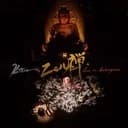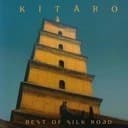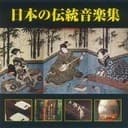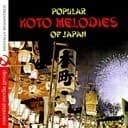Historical Foundation and Traditional Japanese Musical Context
The hirajoshi scale holds a central position in Japanese music history, with documented use in gagaku (imperial court music), Buddhist ceremonial music, and traditional folk repertoire spanning centuries. The name "hirajoshi" translates to "flat tuning" or "level foundation," describing its stable, grounded quality within Japan's sophisticated modal system. Traditional instruments—particularly the 13-string koto, shakuhachi bamboo flute, and shamisen three-string lute—utilize hirajoshi tuning for both spiritual and secular performances. This pentatonic scale emerged from tuning theories developed by Japanese court musicians, incorporating principles fundamentally distinct from Western equal temperament and diatonic systems. The interval pattern (2-1-4-1-4 semitones) creates harmonic relationships that differ dramatically from D Major or D Natural Minor, producing the instantly recognizable "Japanese sound" heard in traditional music and contemporary anime soundtracks. Modern traditional music schools throughout Japan continue teaching hirajoshi as essential repertoire, while contemporary artists adapt it for film scores, video game music, and fusion projects that bridge Eastern and Western musical vocabularies.
Distinctive Sound Profile and Emotional Resonance
D Hirajoshi delivers a wistful, introspective quality characterized by its minor third (F natural) and unique intervallic structure that distinguishes it from Western pentatonic systems. The large leap from E to A (a perfect fourth) creates the characteristic "gapped" quality of Japanese pentatonics, producing a sense of space, contemplation, and aesthetic restraint central to Japanese musical philosophy. This interval structure naturally evokes images of zen gardens, traditional tea ceremonies, mountain shrines, and seasonal changes—making it essential for film composers establishing Asian cultural settings. The absence of semitone motion (except between F and E) eliminates Western leading-tone tension, allowing melodic phrases to float without the gravitational pull toward tonic resolution typical of European harmony. Compared to the brighter D Yo scale or the darker, more dramatic D Iwato scale, D Hirajoshi occupies a balanced emotional space—melancholic yet serene, introspective yet accessible. Musicians describe its character as "quietly beautiful," "nostalgic," and "peacefully contemplative," making it perfect for meditation music, ambient soundscapes, and compositional moments requiring authentic Japanese cultural resonance without aggressive emotion.
Modern Applications in Contemporary Music Production
D Hirajoshi appears extensively in anime soundtrack production, where composers leverage its distinctive pentatonic structure to instantly establish Japanese cultural identity—Studio Ghibli productions and popular anime series frequently employ hirajoshi-based melodic themes. Video game composers working on titles set in feudal Japan or Japan-inspired fantasy worlds (including acclaimed games like "Ghost of Tsushima," "Sekiro," and numerous JRPGs) rely on this scale for authentic atmospheric composition. The wellness and meditation music industry uses hirajoshi for its inherently calming pentatonic simplicity, creating peaceful soundscapes without dissonance or complex harmonic progressions. Jazz musicians exploring modal improvisation incorporate D Hirajoshi for exotic color and fresh melodic vocabulary, often contrasting it with D Blues or D Dorian sections in fusion compositions. Electronic music producers use hirajoshi in lo-fi hip-hop beats, chillwave, and ambient electronica, where its five-note structure provides melodic interest without harmonic complexity or production challenges. The scale works effectively over D minor drones or sustained D power chords, and guitarists appreciate the one-flat key signature and accessible fingerings across the fretboard.
Comparative Analysis of Japanese and Western Pentatonic Scales
Understanding D Hirajoshi's position within the broader Japanese pentatonic family clarifies its distinctive musical qualities and cultural applications. The D In scale shares contemplative qualities but employs different intervals and produces distinct melodic possibilities, while D Iwato creates darker, more dramatic atmospheres suitable for different emotional contexts. The D Kumoi scale offers yet another Japanese pentatonic alternative with its own characteristic flavor and traditional uses. Comparing hirajoshi to Western pentatonics reveals fundamental structural and cultural differences: while D Minor Pentatonic (D-F-G-A-C) emphasizes blues-rock vocabulary and Western harmonic implications, hirajoshi's E and B♭ create entirely different melodic possibilities and immediate cultural associations with Japanese music. The major third interval from F to A and the unusual B♭ to D leap produce the scale's signature Japanese quality. Musicians can reference D Chromatic to visualize hirajoshi as a carefully selected five-note extraction from all twelve chromatic pitches, chosen for specific cultural and sonic reasons developed over centuries of Japanese musical tradition.
Practical Learning Strategies and Skill Development
Begin learning D Hirajoshi by slowly playing its five notes (D-E-F-A-B♭) while listening to traditional Japanese music featuring koto or shakuhachi—this contextual listening dramatically accelerates authentic phrasing, ornamentation, and stylistic internalization. Practice ascending and descending patterns, emphasizing the characteristic interval leaps, particularly the perfect fourth from E to A that creates the scale's distinctive gapped quality. Guitarists benefit from the one-flat key signature and should explore multiple fretboard positions, discovering how the five-note structure creates visually clear, memorable patterns. Keyboardists can focus on the scale's relationship to D minor while noting the crucial differences. Improvise over a D minor drone or sustained D power chord, allowing the scale's notes to float without Western harmonic progression expectations or chord change constraints. Transcribe traditional Japanese melodies like "Sakura Sakura" (often performed in hirajoshi tuning) to understand authentic melodic phrasing, dynamics, articulation, and the importance of silence (ma) in Japanese musical aesthetics. Compare D Hirajoshi directly with D Minor Pentatonic to hear exactly how substituting E and B♭ for G and C transforms cultural identity and emotional character. Compose minimalist pieces using exclusively hirajoshi notes, experimenting with sparse textures, sustained tones, and negative space. Study contemporary applications in anime soundtracks, video games, and world fusion recordings to understand how hirajoshi successfully adapts to modern production contexts while maintaining authentic character and cultural resonance.





